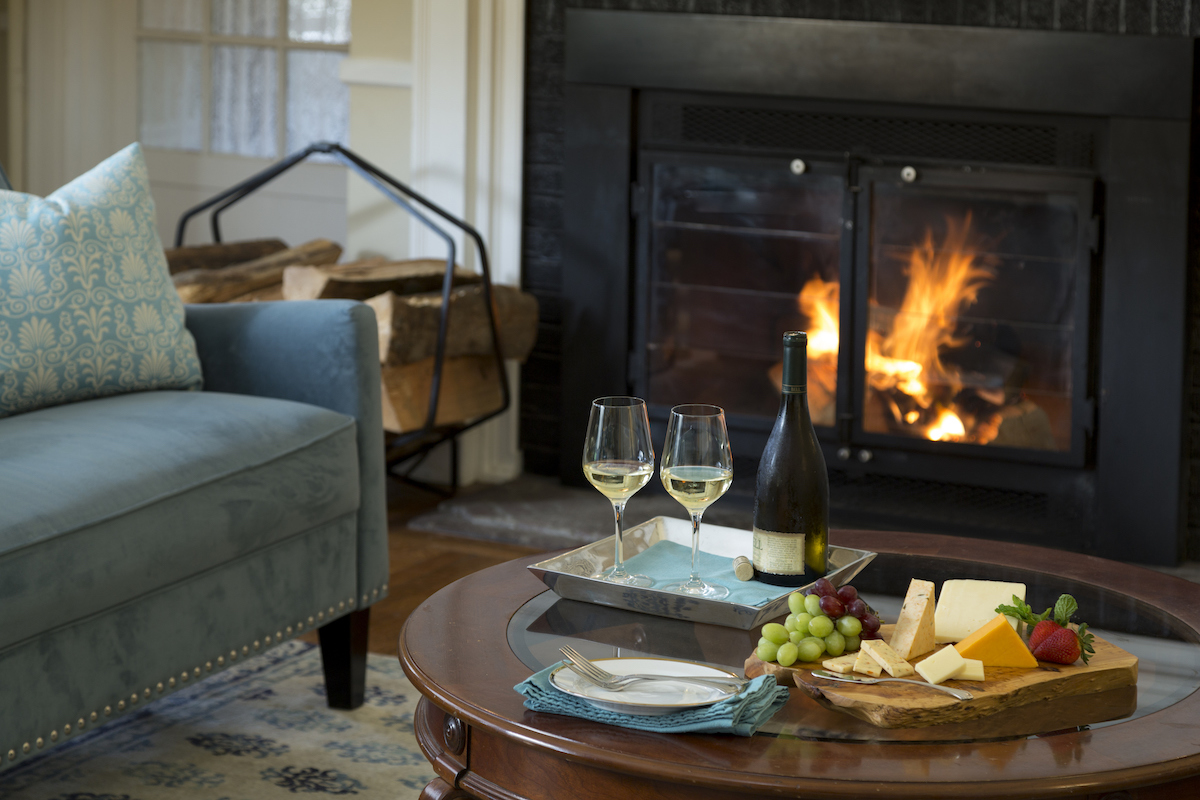

We may earn revenue from the products available on this page and participate in affiliate programs. Learn More ›
Humans have gathered around fires for a very long time, so it’s no surprise that many of us want a hearth in our contemporary homes. A fireplace brings an unmatched sense of coziness to a living space—not to mention necessary warmth. Nowadays, there are many more options for homeowners to choose from than the classic wood-burning fireplace (though some would argue it’s hard to beat a traditional crackling flame). There are several types of fireplaces you can install to bring comfort and heat to your home, so check out the popular fireplace types below.
Electric Fireplaces
Electric fireplaces provide “fire” at the push of a button or flick of a switch. Powered by electricity, they’re very user-friendly and the safest option too. As Forrest Webber, founder of online home store The Trade Table, explains, “Electric fireplaces are the safety kings of the fireplace world. No real flames, no sparks flying, just good ol’ electric heat.”
There’s one big caveat: Electric fireplaces don’t produce a real fire. This significantly improves their safety profile (they don’t emit hazardous gasses, don’t have embers, and are all-around easy to maintain), but it can make them unappealing for those who want the real blazing thing.
Electric fireplaces do a great job at mimicking fire, though, still offering the warmth and aesthetics of a fireplace. Many of them even provide the option of turning off the heat entirely so you can enjoy flickering flames in summer months without actually changing the temperature of your home. Best of all, electric fireplaces are usually the easiest to install. There are fireplace insert, freestanding, and wall-mounted types of electric fireplaces, and since they don’t require a vent or chimney, location is flexible—all you need is a suitable nearby power source.
1. Fireplace Inserts
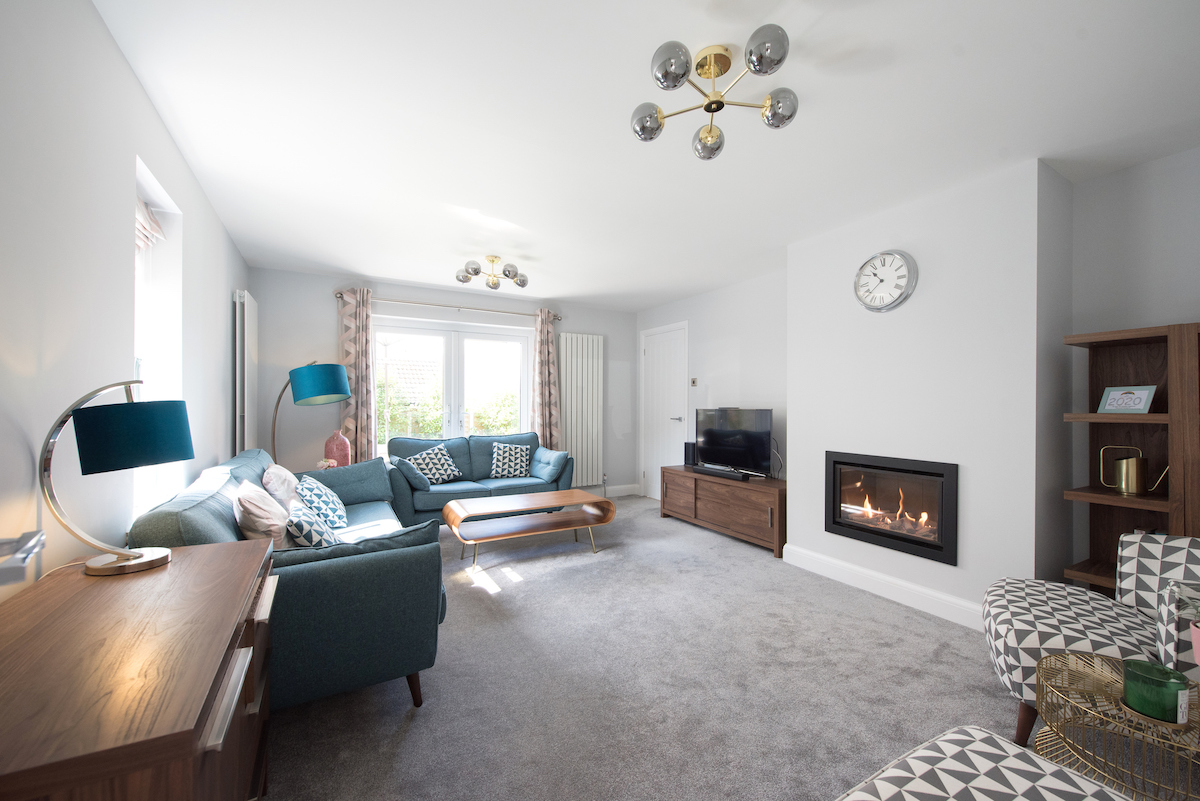
An electric fireplace insert needs to be installed into a recessed space. For most homes, that’s an existing fireplace. Electric fireplace inserts are a great way to get an old, out-of-commission fireplace back into use (at least, superficially—it’s not a real fire but it will look the part). It’s also possible to use them as a wall fireplace by inserting them into a wall nook, a popular choice for ultra-modern homes.
Electric log inserts are another option: They essentially consist of fake logs and a faux fire illusion, without the firebox and glass housing of full electric fireplace inserts. These are the easiest to install and can be placed directly in an old fireplace.
2. Fireplace TV Stands
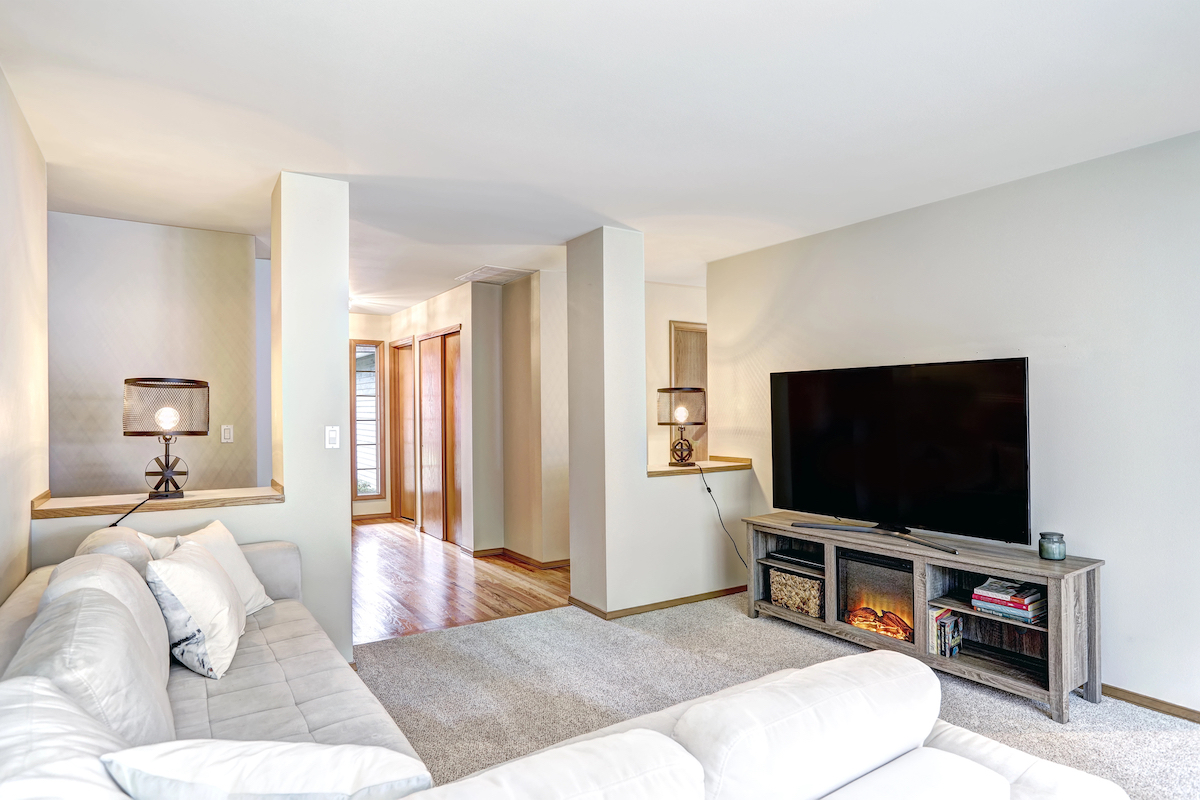
The lack of real fire means electric fireplaces can be more creative than traditional counterparts, and freestanding electric fireplaces are a great alternative to a built-in fireplace. A popular product in this category is the fireplace TV stand. A faux fire display and TV stand combined into one unit, they’re a compact solution perfect for small rooms, especially those lacking an existing fireplace. They don’t require installation into a recessed space, so they can fit in just about any room.
Wood-Burning Fireplaces
Wood-burning fireplaces use the most time-tested fuel source: wood. For those who love a roaring wood fire, it’s hard to beat the nostalgic, crackling flames. They’re what many people envision when they picture a home fireplace, with a fireplace mantel, hearth, grate, and smoldering fire. They can be a significant heat source too, particularly for those who live off the grid. No electricity or gas lines are needed. If you have access to firewood on your property (and the time to chop it up), fueling this type of fireplace is free and self-reliant.
Wood-burning fireplaces come with their fair share of risks and are relatively high-maintenance. Webber describes them as “the wild child of fireplaces—gorgeous but high-maintenance. If you’re not careful, you’ve got embers, smoke, and that pesky creosote buildup in the chimney that can turn your cozy night into a firefighter’s visit. Think of it as the classic car of fireplaces—it looks great but needs some serious TLC to stay safe.”
It also takes more work to use a wood-burning fireplace; you have to tend to the flames. To keep them safe and operational, they require yearly maintenance and frequent clearing of ash and creosote. A chimney is necessary to prevent build-up of harmful combustion byproducts.
3. Stone Fireplaces

The traditional wood-burning pick is a masonry fireplace, built on-site out of stones or bricks. These are beautiful (and expensive to install) structures that are often the focal point of a living space. A well-built and well-maintained stone or brick fireplace can last a lifetime. They can have an open or closed hearth. Open-hearth fireplaces are more for aesthetics nowadays and should not be used as a significant source of heat; closed-hearth fireplaces can be more efficient and can help lessen air pollution inside the room. Adding a high-efficiency wood-burning fireplace insert to an existing old stone fireplace is a worthwhile upgrade for many homes.
4. Wood-Burning Stoves
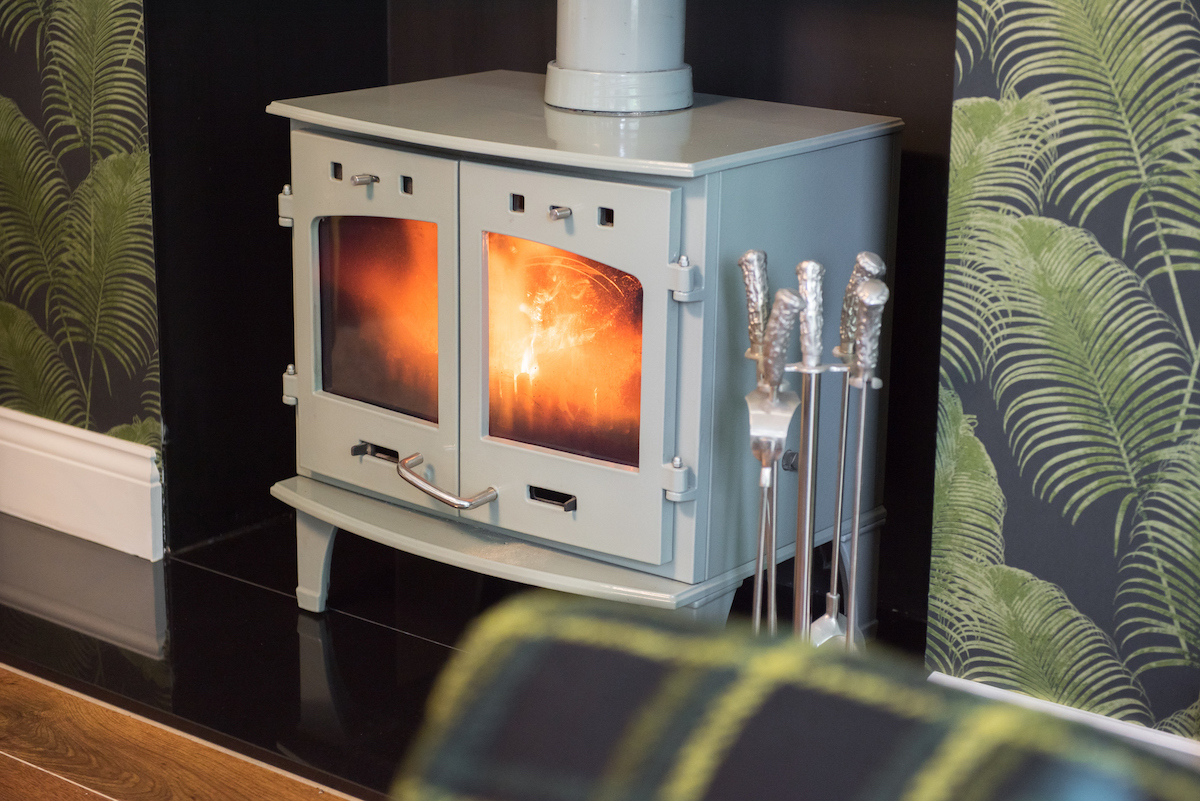
An indoor wood-burning stove is usually made of metal and is a great choice for heating a space. These freestanding units are more efficient and provide greater heat output than stone fireplaces. They still have a chimney to vent out smoke and gasses, so they’re fixed in place. But they are often more compact and less substantial structures than stone fireplaces. Pre-fabricated and installed on-site, they’re generally more affordable than stone fireplaces, too.
Gas Fireplaces
Choose from a natural gas fireplace or a propane fireplace in this category. Compared to an electric fireplace, an indoor gas fireplace is closer to the “real thing”—they create a real fire. While they lack the crackling sounds and smoky aroma of wood fires, they are more user-friendly, low-maintenance, and efficient. Some can turn on with the flick of a switch, and gas fireplace inserts are an option for easier installation. They require a lot less tending to and cleaning than a wood-burning fireplace. So for many people, they’re a fabulous option that balances the ambiance of a real fire with ease of use.
The presence of gas and a real flame comes with risks, though, with possible hazards from the fire itself, byproducts from burning, and possible leaks in the gas system. Annual inspections by a certified professional are recommended to keep gas fireplaces safe. Webber also shares another safety tip, saying “A carbon monoxide detector is a must; you’ll want to check those gas lines occasionally. On the upside, you get that real flame without the hassle of chopping wood. Just click the remote, and boom—instant cozy vibes.”
5. Ventless Fireplaces
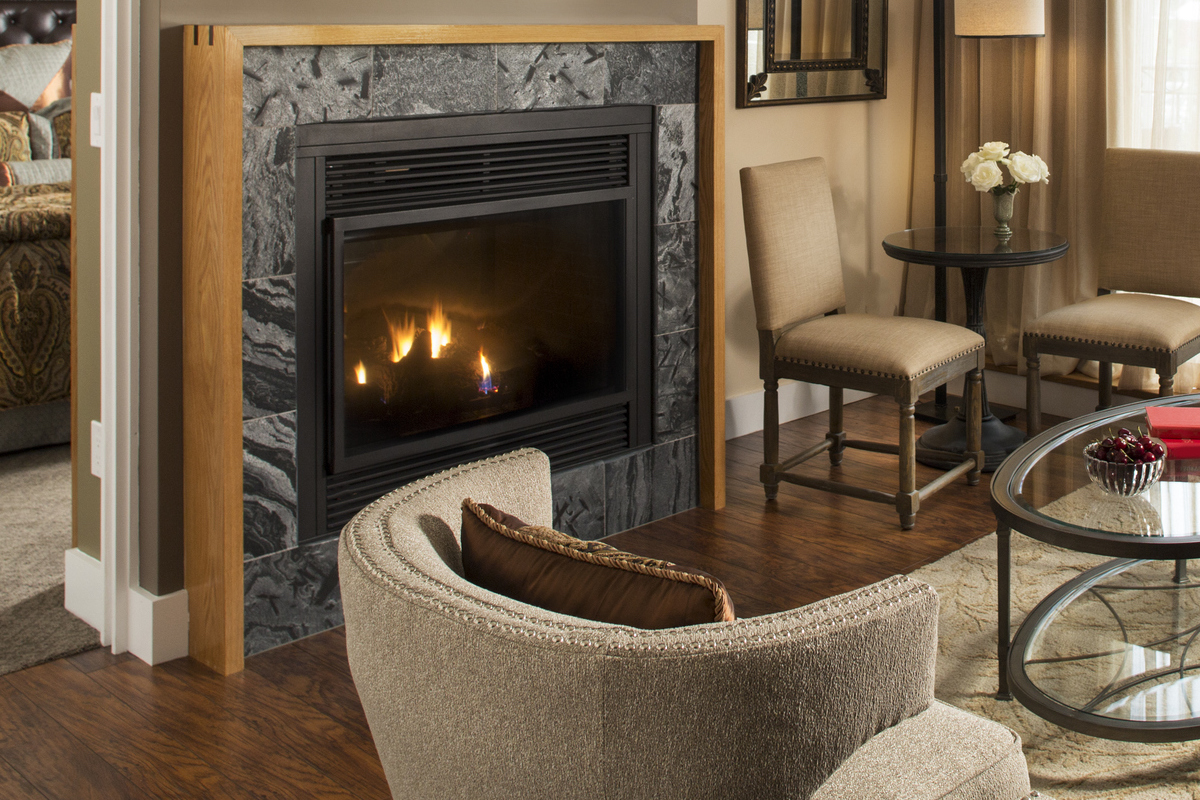
A ventless fireplace doesn’t require an external venting system. They’re designed to burn so efficiently that they vent their byproducts back into the room they’re in instead of outdoors. This offers location flexibility for installation. However, they have their caveats. Since they vent into the living space, it’s recommended to keep a window cracked open while using them (which can defeat the heating purpose). Though rare, system failures can result in harmful substances like carbon monoxide being vented into the room. Ventless gas fireplaces are banned in some states and cities because of these possible dangers. Check your local regulations and consider your risk tolerance if you plan to install one.
6. B-Vent Fireplaces

Also called natural vent fireplaces, B-vent fireplaces use propane or gas as their fuel source, while using air from inside your home for combustion. The vent the exhaust gasses outdoors through a chimney or pipe. This vented fireplace type is pretty straightforward to install in an old wood-burning fireplace, so it can be a good choice for homes converting to a gas fireplace. However, they’re less efficient than direct-vent fireplaces, explained ahead.
7. Direct-Vent Fireplace
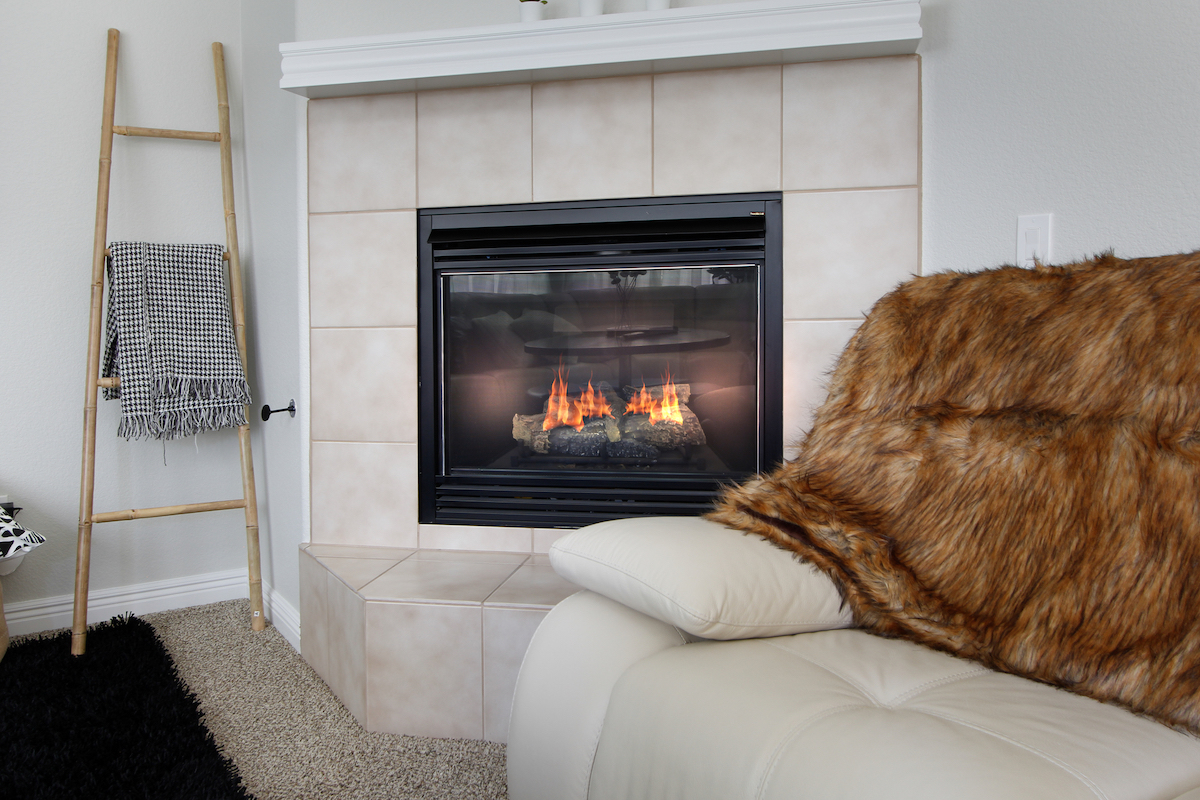
A direct-vent fireplace intakes air for combustion from the outdoors and expels exhaust to the outdoors through pipes. They don’t use any air from inside your home. As a closed and sealed system, they’re more efficient than B-vent fireplaces. They’re also more flexible to install since they don’t require an existing chimney.
Other Fireplace Types
Electric, wood-burning, and gas fireplaces are the main fireplace types to consider. We’ve also covered some of the top options within each type above. There are some other fireplace features to look out for though, explained ahead.
8. See-Through Fireplaces
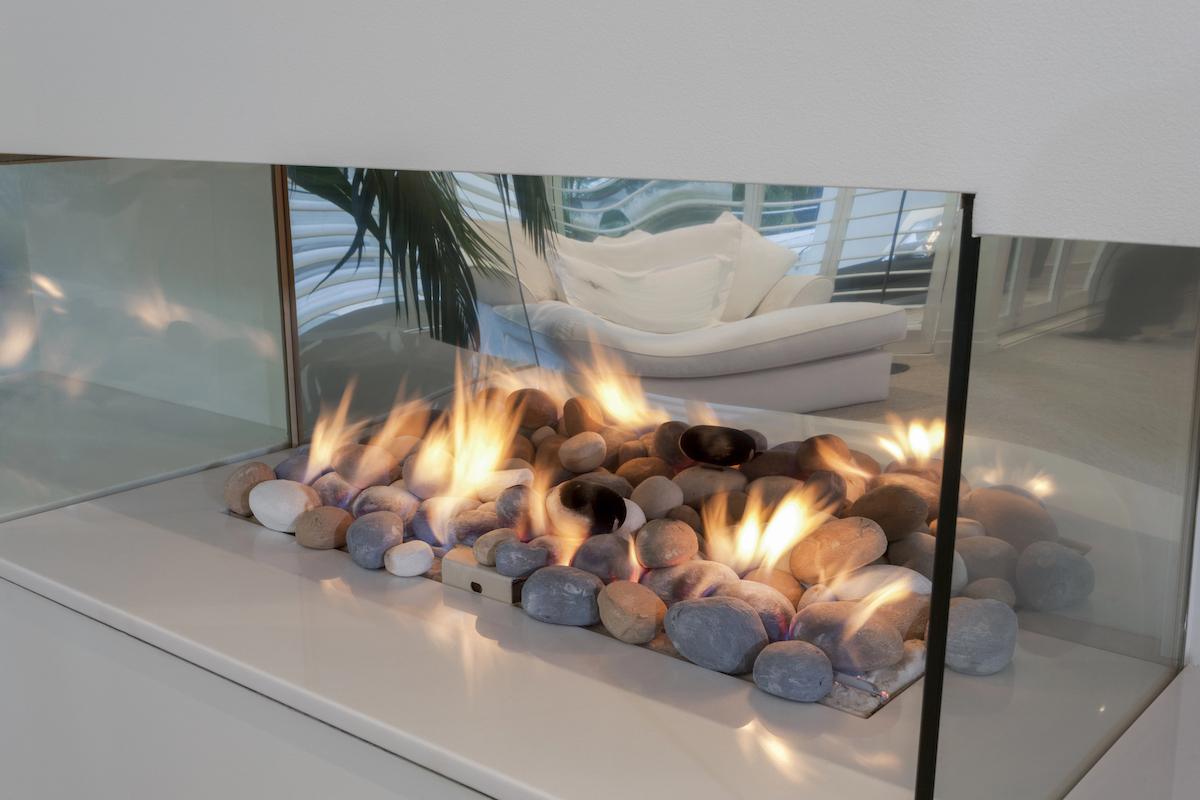
See-through fireplaces are exactly what their name suggests. They’re fireplaces that can be viewed through both sides, instead of just from the front. Essentially, they have glass on two sides instead of only the front. Install them between two rooms, or even between an indoor living room and outdoor space, and the same fireplace can provide its calming glow and heat in two places at once.
9. Prefab Fireplaces
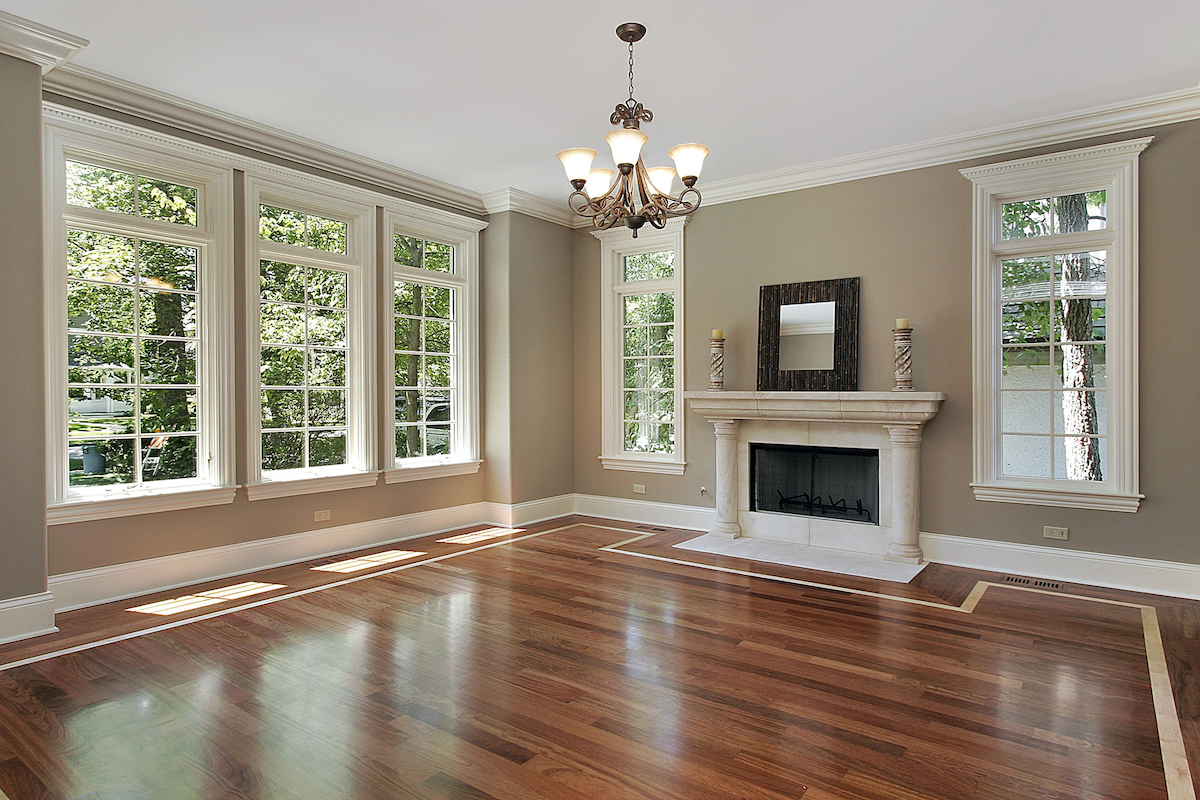
Prefabricated fireplaces (or prefab fireplaces for short) make up the bulk of real fireplaces in modern homes. A prefabricated fireplace is assembled elsewhere, then delivered to your home and installed into place. These are suitable for new home builds or renovations, and they are available in wood-burning, gas, and electric versions. Put simply, they’re just fireplaces that are factory-built rather than built on-site.
10. Outdoor Fireplaces
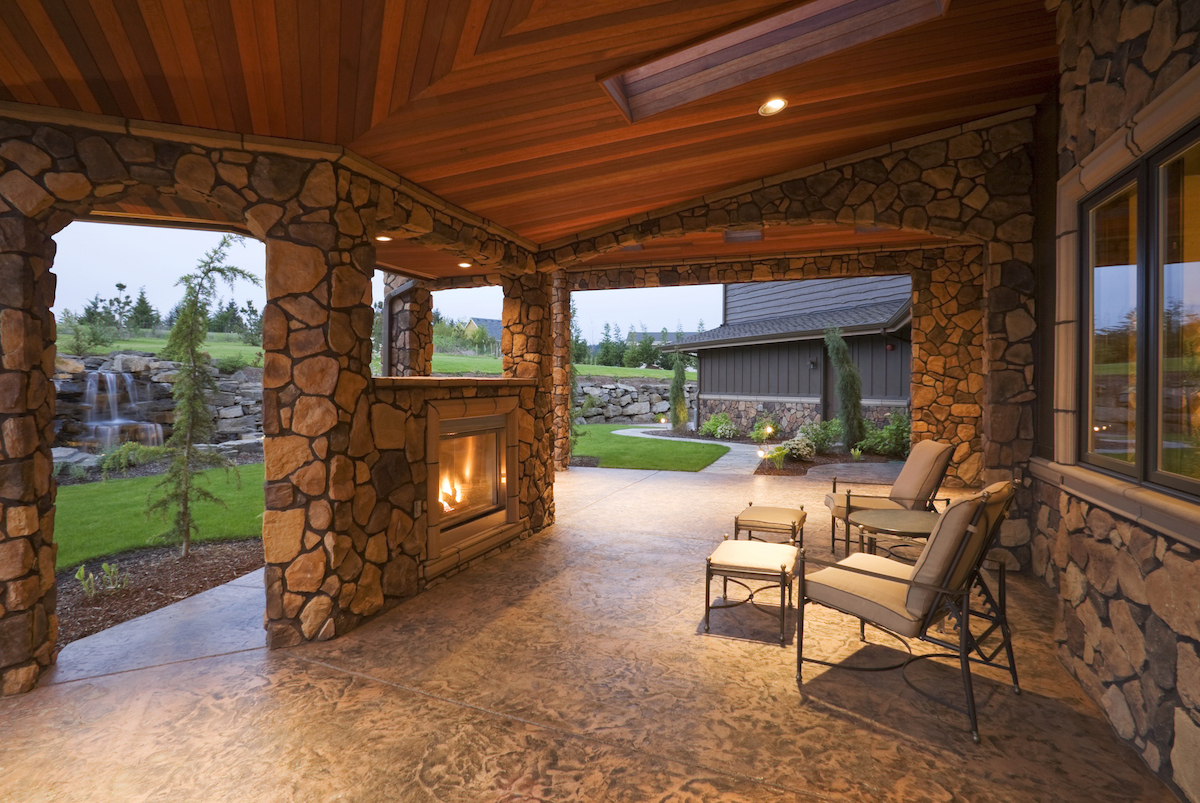
Outdoor fireplaces bring the coziness of a living room fireplace to the great outdoors. They’re built to withstand the elements and work outside year-round. Outdoor fireplaces are also available in wood-burning, gas, and electric versions. Unlike outdoor fire pits, outdoor fireplaces are covered and look similar to their indoor counterparts, which lends them a more elegant and built-in look.
